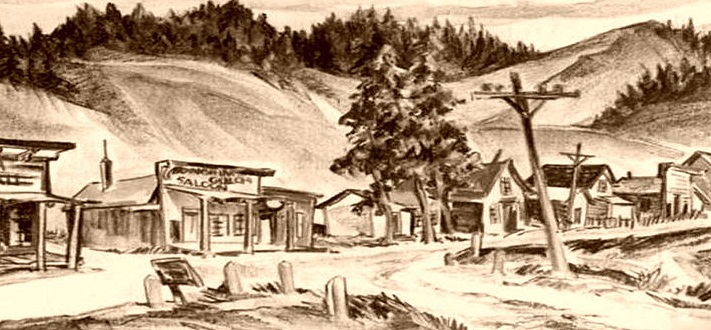The Black HIlls, 1950 to 1985

Following World War II, the United States decided that it wanted to sever its relationships with American Indian tribes. In order to do this, it needed to settle all possible legal claims which might arise out of its past dealings with the tribes. Thus, in 1946, Congress created the Indian Claims Commission to adjudicate all claims arising out of fraud, treaty violations, or other wrongs done to the Indians by the government. Under the Indian Claims Commission Act, a tribe could receive full and just compensation for wrongs. It was presumed that most of these claims would deal with land: lands which had been illegally seized from Indian tribes, land which had been purchased from them at less than their true market value, and damages to Indian land by non-Indian intruders.
In 1950, the Sioux re-filed their claim for the Black Hills, South Dakota with the Indian Claims Commission. Eight tribes were a party to the case: Cheyenne River Sioux Tribe (South Dakota), Crow Creek Sioux Tribe (South Dakota), Lower Brule Sioux Tribe (South Dakota), Oglala Sioux Tribe of the Pine Ridge Reservation (South Dakota and Nebraska), Rosebud Sioux Tribe (South Dakota) Santee Sioux Tribe (Nebraska), Sioux Tribe of the Fort Peck Reservation (Montana), and Standing Rock Sioux Tribe (North Dakota and South Dakota).
Two years later, oral arguments were held regarding the Sioux Black Hills claim before the Indian Claims Commission. The attorney for the Sioux argued that the United States violated its trust obligations as guardian of the Sioux tribes when it acquired the Black Hills.
In 1954, the Indian Claims Commission rejected the Sioux claim on the Black Hills as the Commission did not feel that the United States had acted dishonorably. The Commission felt that
“it was a practical necessity that the lands be acquired by the defendant and made available to white miners.”
The Commission felt that the United States had not only tried its best to keep miners out of the Black Hills, but in addition Congress had generously appropriated funds to support the Sioux even after federal obligation to provide rations had expired. The Commission was either unaware or purposely ignored that fact that President Ulysses S. Grant had ordered the military to make no attempt to deter the miners from entering the Black Hills in 1875.
While the Sioux felt that the findings of the Indian Claims Commission were not correct, in 1956 the Court of Claims affirmed the Indian Claims Commission rejection of the Sioux claims. However, the following year, the Court of Claims vacated prior proceedings in the Sioux Black Hills claim. According to the Court, the claim had been decided on a distorted record in which the attorney for the tribes had made concessions contrary to fact and had failed to conduct significant research in the case.
In 1958, the Court of Claims ordered the Indian Claims Commission to reopen the Sioux claim for the Black Hills on the grounds that the Sioux had been inadequately represented and as a consequence an inadequate record had been presented.
In 1960, the Court of Claims allowed the Sioux to amend their original claim and to substitute two separate petitions: (1) a claim for lands outside of western South Dakota which were ceded under the 1868 Fort Laramie Treaty, and (2) a claim for property confiscated by Congress (the Black Hills). The Black Hills claim included claims for the land, the hunting rights, the placer gold which was removed, and three rights-of-way.
In 1974, the Indian Claims Commission awarded the Sioux $17.5 million for the Black Hills. The opinion of the Commission was that the Black Hills had been taken in violation of the Fifth Amendment and therefore the Sioux were entitled to just compensation. In addition, the Commission awarded the tribes compensation for placer gold which was removed and for the loss of rights-of-way. The total award was $105 million. The finding of the Indian Claims Commission was appealed by the United States.
In 1980, the Supreme Court in United States v. Sioux Nation of Indians affirmed the Court of Claims ruling and awarded the Sioux $106 million for the Black Hills. The monetary award was for the value of the land and minerals at the time of taking in 1877 plus interest. In the decision which clearly ruled that the lands had been taken illegally, Justice Blackmun wrote:
“A more ripe and rank case of illegal dealing will never, in all probability, be found in our history.”
In his dissent, Justice Rehnquist did not even bother to conceal his personal anti-Indian racism with legal arguments and wrote:
“the Indians did not lack their share of villainy either.”
Following the Supreme Court decision, the Court of Claims determined that the only issue remaining on the Sioux land claims for lands ceded in the 1868 Fort Laramie Treaty was the offsets to be allowed. The government offered to settle the case for $4.2 million in offset costs but the tribes rejected the offer and demanded the return of all federal lands in the area.
In 1980, Mario Gonzalez, the tribal attorney for the Oglala Sioux Tribe, filed suit in U.S. District Court asking for recognition of Sioux title to the Black Hills and $11 billion in damages for denial of the tribe’s use and occupancy of the area. Gonzalez contended that the government had taken the land for the purpose of securing private mining claims rather than for the general public. The District Court dismissed the case claiming that it lacks jurisdiction. The tribe appealed, but also lost the appeal.
The Sioux did not want money for the Black Hills: they wanted this sacred land returned to them. They refused to take the money which had been awarded in their case and in 1982 the Committee for the Return of the Black Hills was formed. The Committee had one representative from each of the Sioux tribes who had been involved in the suit.
In 1985, Senator Bill Bradley (Democrat, New Jersey) introduced a bill in the U.S. Senate which would return the federally owned land in the Black Hills in South Dakota to the Sioux. Under his proposed bill, private ranches and businesses as well as Mount Rushmore would remain untouched. The bill was opposed by non-Indians in South Dakota and was defeated in 1987.
The Open Hills Association was formed by Senator Tom Dashle (Democrat, South Dakota) in 1990. The new association was dedicated to fighting all attempts by the Sioux to regain the Black Hills.
The reparation payment is currently being held in trust for the Sioux tribes. With interest it has grown to nearly $600 million. A large majority of Sioux tribal members, in spite of the poverty that is found on most of their reservations, continue to affirm that the Black Hills are not for sale and support attempts to regain the sacred area.



